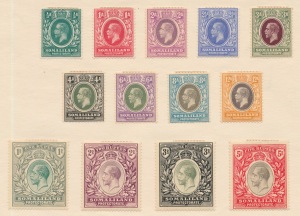If you like stamps and stamp history, working on old collections is one of the most interesting things that you can do. Couple of years back we purchased a collection that had been made in the 1930s and had been passed down through the generations with considerable care, if not interest, on the part of the new owners. The last owner was an 85 year old grandson of the original collector.
The collection is interesting for two reasons. First, the original collector never used albums, but rather kept most of the stamps that he bought on the original lot pages as he purchased them over 80 years ago. The collector was a loyal George Sloane customer. His choice of dealers was a very good one. Sloane was the among the best of his generation, running a large auction house that most sold mostly US but also did a bit of British business. George Sloane is one of those dealers who has come down to us through his writings. Before he died in 1958, he produced over a thousand columns for the greatest philatelic magazine of its age—Stamps Magazine. These articles were republished in book form in the early 1960s. Copies are available on Amazon, and as an insight to the modes and methods of collectors in pre-WWII America, as well as a source of fascinating information, this is a book that belongs in every collector’s library. Sloane, as was common at this time, hinged the stamps he was selling to the lot page. When collectors today wonder why so much early material was damaged, look at how much handling these stamps received. Any lot viewer could crease a stamp and any careless lot hinger could thin one. Polyurethane hadn’t been invented, and stamp protection was saved for rarities, not for ordinary auction lots. The current philatelic paradox—that collectors today often spend more to mount and protect their stamps than the stamps themselves are worth—did not exist until about 1980.
Second, this collection provides a different time frame on stamp investment. The Somaliland lot pictured above, just one of the hundreds of lots in this collection, cataloged $15 in 1930, and the lot sold for $6. Today it catalogs $221 and will sell for $100. That may not make philately the greatest investment in the world, but it certainly is a respectable return (and note that the percentage selling price of slightly less than half catalog is unchanged in over eighty years). Further, the collector bought many blocks of four. Collectors in the 1930s never cared about hinging (and with the way auction lots were displayed you can see why). Most of the NH stamps that we have from this period are from blocks from which the bottom two stamps escaped hinging. If he had bought this set in blocks, as he did many others, the same $6 per set that he paid would be worth closer to $200 each.

